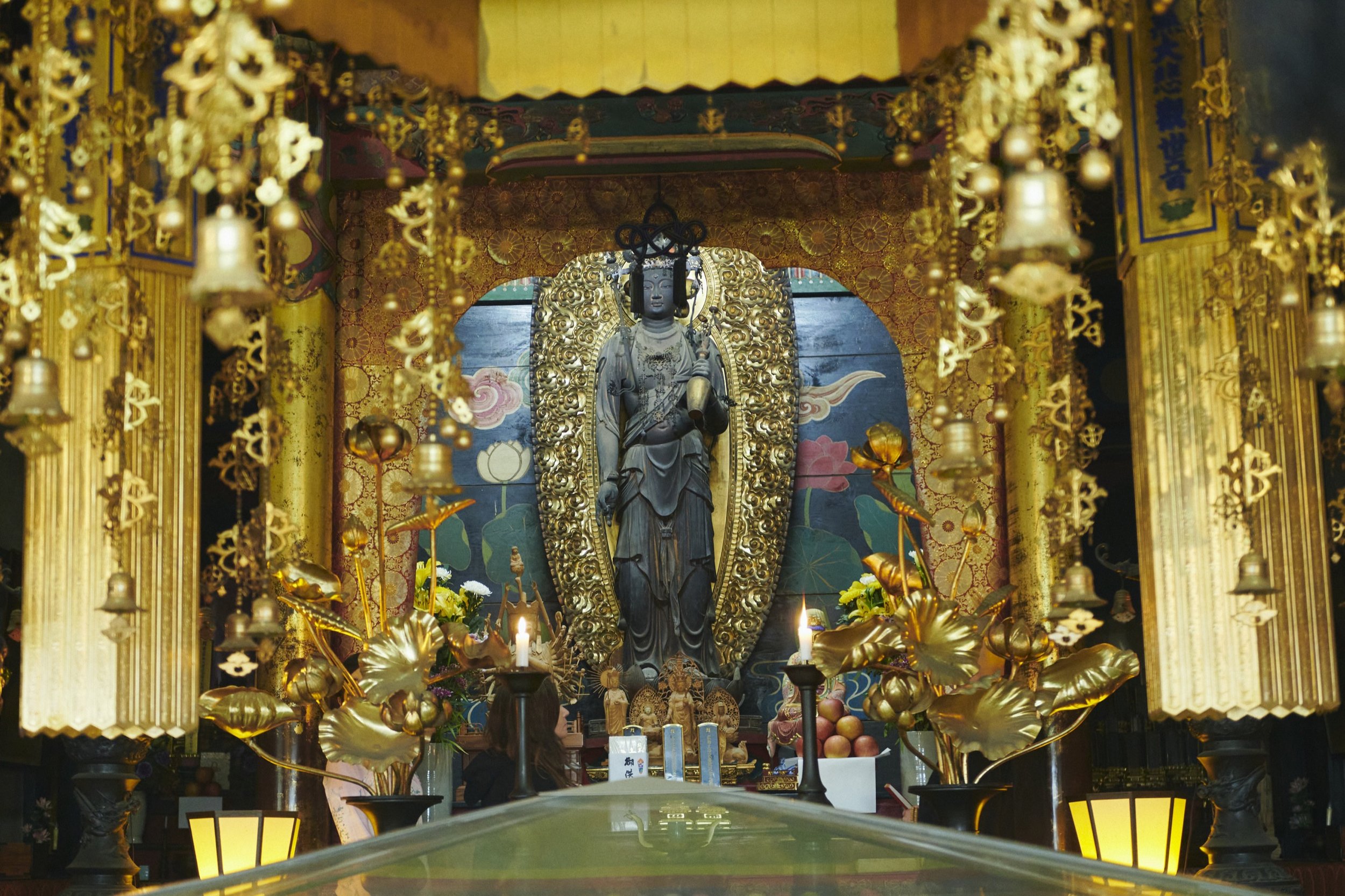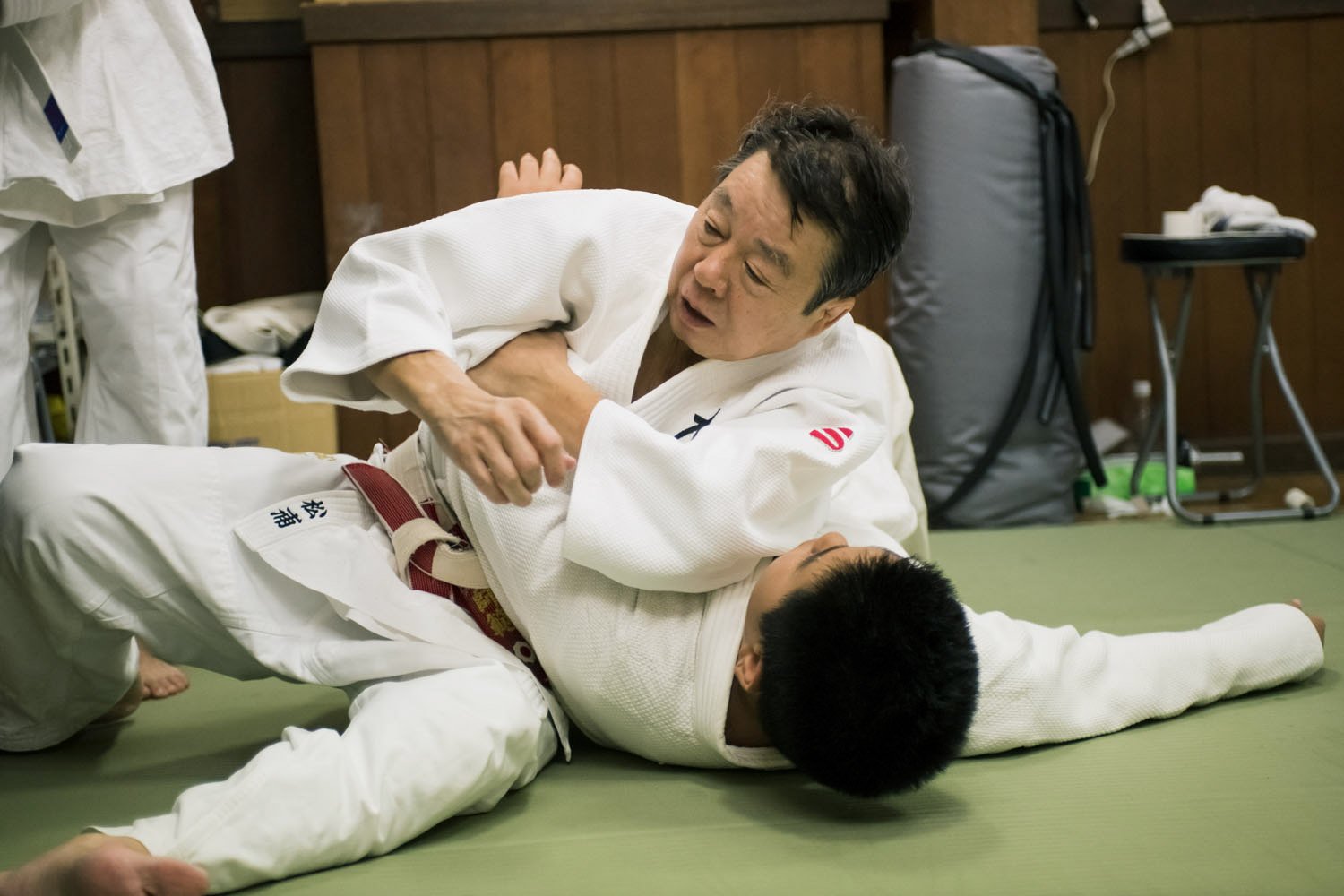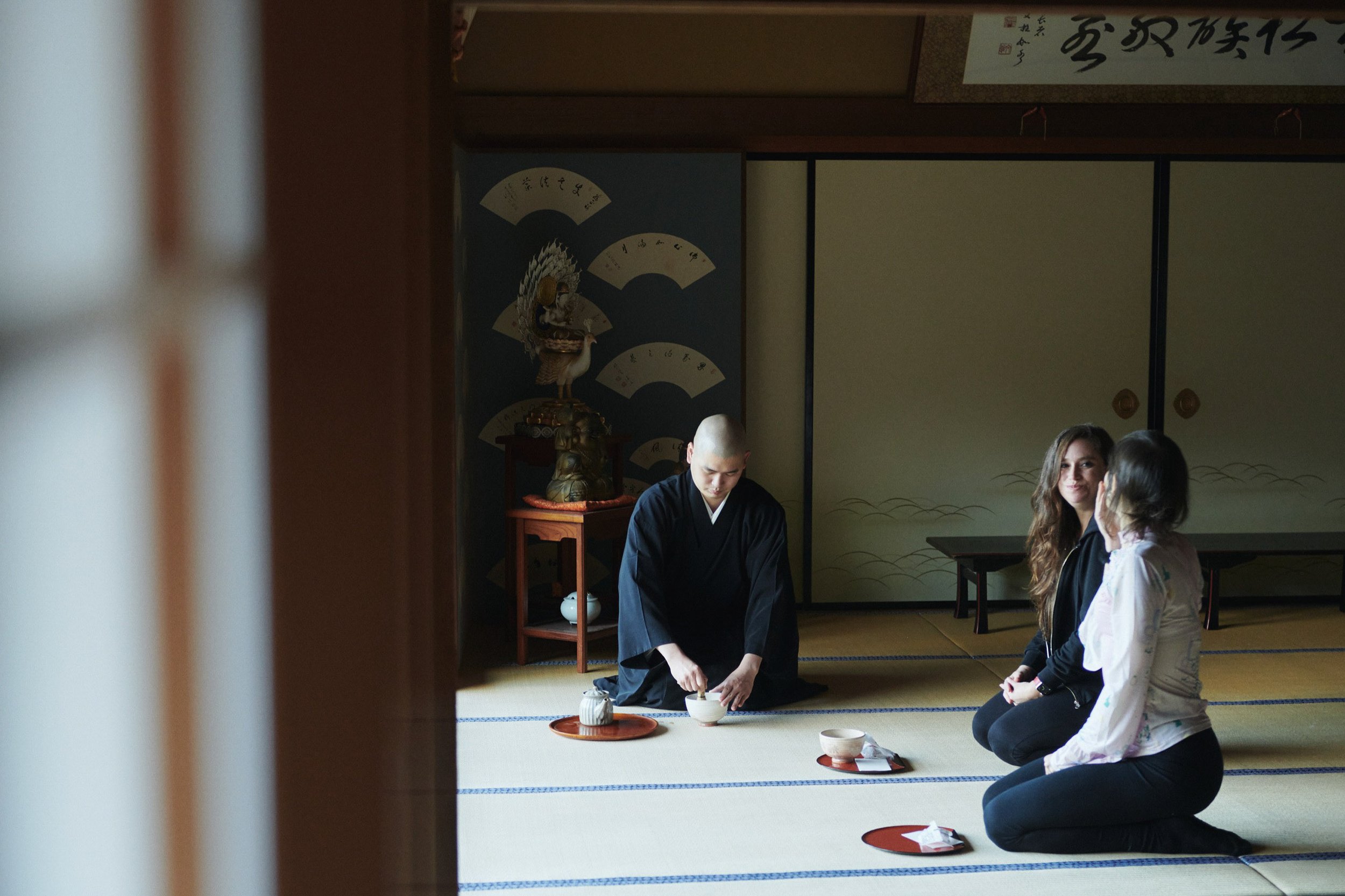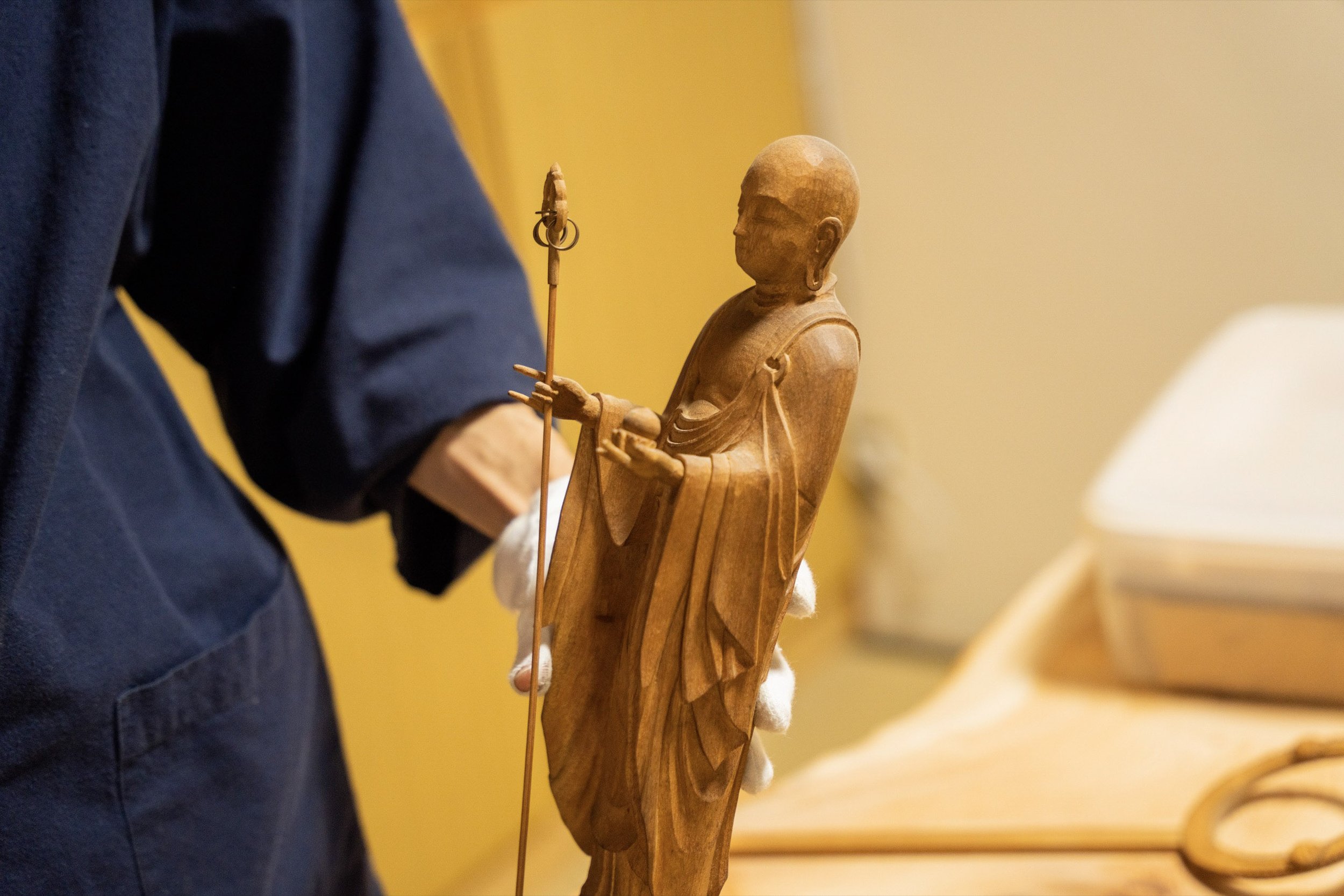The Legend of Benkei: The Enduring Imagination of the Japanese Warrior Monk
By Nikolas Broy
Wrapped in white-colored garments and cowls, wearing wooden geta clogs, and wielding naginata long swords, the medieval Japanese monastic warrior and its archetypal image are full of complexity and subject to varied interpretation. While this stereotype of the sohei uniformed clerical forces is a product of much more recent imaginations and negative anti-Buddhist representations, medieval Japan (ca. 9th to 16th centuries) was home to some of the most infamous monastic armies in Asian Buddhist history. This period of warrior monks gave birth to one of the most influential figures of medieval Japan, one known even to this day: Benkei 弁慶 (d. 1189). Seen in literature, language, and media culture, the mythical figure of Benkei has played an enduring role in Japanese culture and consciousness.
Since the very creation of Buddhism – and subsequently, its arrival to Japan in the 6th century – Buddhist teaching has abhorred violence and killing. As a result, taking life in any form is considered one of five grave misconducts that inevitably leads to a monk’s expulsion from the Buddhist order. According to formal teaching, monastics are also not allowed to carry or store arms and to stay with an army or other military unit for longer than a few days. Especially in the Mahayana tradition that spread into East Asia in the first millennium CE, the monastic codes specifically list hiring killers, using fatal poison, storing weaponry, reading military books, watching fights, and serving as envoys during military conflicts as behavior that is disallowed by members of the monastic Buddhist community—even though not all offenses would result in expulsion.
Amid the political turmoil and shifting territories within medieval Japan, however, the Buddhist clergy turned away from pacifist teachings and toward warrior training to build strength and stability. Termed “monastic soldiers” (sohei 僧兵) by later observers and thus strongly supporting a codified identity, these forces consisted of mostly lower clerics or non-ordained menial workers attached to large temple estates. Much more similar to members of the rising warrior class than actual monks, they were employed by monastic leaders to settle political and economic disputes between rival monasteries, resist secular forces, and protect themselves from bandits. As the soldier ranks increased, so too did the power and influence of Buddhism on political and economic life, leading many historical sources to describe a corrupt and power-hungry Buddhist clergy. Now a serious threat to the ruling daimyo class, the sohei military institution was dealt a fatal blow by the resolute warlords Oda Nobunaga 織田信長 (1534–1582) and Toyotomi Hideyoshi 豊臣秀吉 (1536–1598), who massacred hundreds of monks and burnt many sohei monasteries to the ground—including Enryakuji 延暦寺, on the peak of Mt. Hiei, which was infamous for its involvement in violent affairs.
It is from this tradition and history that we come to learn of the warrior monk Benkei. Though little of his life is recorded in historical sources, most Japanese are familiar with his spectacular journey from self-willed Buddhist fighter to the loyal companion of Minamoto no Yoshitsune 源義経 (1123–1160), well-regarded as one of the most gifted and brilliant warriors in Japanese history.
Legendary accounts of Benkei’s extraordinary fighting skills speak of a duel with Yoshitsune on Kyoto’s historical Gojo Bridge, a battle portrayed by countless painters. According to these stories, Benkei sought to collect one thousand swords from warriors he believed morally unworthy. After falling short of his aim by just a single sword, he was surprisingly bested by Yoshitsune. With this defeat serving as a turning point in his life, Benkei is said to have become Yoshitsune’s loyal retainer, joining him in many journeys and battles. After the pair were betrayed by Yoshitsune’s half-brother, Minamoto no Yoritomo 源頼朝 (1147–1199), the later founder of the Kamakura shogunate, Benkei sacrificed his own life to hold back enemy forces, granting his master the opportunity to commit “honorable suicide” (seppuku 切腹).
Lauded by later generations not merely for his military prowess but for his extraordinary pursuit of fidelity to his master, Benkei evolved into an iconic representation of the crucial Confucian virtue of loyalty (chu 忠). Traversing the boundaries of orderly Buddhist and secular culture, as well as his untamed desires and impulses, he was also often portrayed as an ambivalent trickster. Accordingly, he evokes similar figures in premodern East Asian fiction, such as the “Flowery Monk” Lu Zhishen 魯智深 from The Water Margin and Sun Wukong 孫悟空, the monkey king from the epic sixteenth-century Journey to the West, both novels that were also well received in Japan. Benkei was also popularised by countless Noh plays and literary works dating back to the 15th century, evolving his image into one of military prowess and absolute political loyalty, which had specific significance among the Samurai class. Benkei’s many portrayals and ever-changing characterization has allowed him to evolve into the single most famous warrior monk in Japanese history.
It is hardly surprising that he quickly entered Japanese lore and even became proverbial. One prominent example references Benkei’s mortal sacrifice for his master Yoshitsune, when he bravely held back approaching enemy forces and singularly endured an onslaught of hundreds of arrows. Despite this, Benkei remained standing until his very last breath. This moment became encapsulated in the phrase “Benkei’s standing death” (benkei no tachi ojo 弁慶の立往生), which describes a situation in which one can move neither forward nor backward. Encapsulating one of Benkei’s different qualities, Edo period citizens (1603–1867) began to refer to someone boastful at home but meek outside as “home Benkei” (uchi benkei 内弁慶) or “concealed Benkei” (kage benkei 陰弁慶). Still today, this logic is at work in the term “internet Benkei” (netto benkei ネット弁慶), which refers to netizens who are impudent and boastful online but submissive and shy in the “real world.” It is worth noting that this contemporary usage situates Benkei as an icon of masculinity, which conveys the message of how to be a “genuine man” (honto no otoko 本当の男).
Since the Meiji period (1868–1912), in which Japan experienced unprecedented modernization and Westernization, the image of the loyal and brave warrior monk was useful for the government in their pursuit of building national identity and creating dutiful citizens. Playing into the perception of enduring strength and power, Benkei and Yoshitsune were selected as the name bearers of the first two US-produced steam locomotives installed in the Hokkaido railway in 1880, which were called Yoshitsune-go 義経号 and Benkei-go 弁慶号, respectively.
Industry and businesses, as well, took advantage of Benkei’s fame to great success. As early as the nineteenth century, a sweets shop in a part of Edo located in today’s Shinjuku District was famous for selling “Benkei sweets” (benkei-ame 弁慶飴)—a name drawn from a giant wooden statue of him displayed at the store. Similarly, one could find diverse products exploiting his image and name, ranging from dolls and Japanese sake to candy and other food products. Probably most visibly in Benkei’s purported birthplace in the small city of Tanabe in Wakayama Prefecture, many local restaurants serve dishes that evoke his legendary strength, such as “Benkei Power Udon” (benkei chikara udon 弁慶力うどん). It is also here that a festival is held in his name every October, the Benkei matsuri 弁慶祭り, which was celebrated for the first time in 1986. Having been invented to boost tourism in this less-traveled region, it became a centerpiece of the local identity, not least because a giant statue welcomes passengers arriving at the JR Kii Tanabe Train Station.
The Meiji Era also saw many new books and plays come into being, with Benkei’s story also being translated into motion pictures. One of the earliest examples is probably Tora no o wo fumu otokotachi 虎の尾を踏む男達 (Those Who Tread on the Tiger’s Tail, 1945) by Kurosawa Akira 黒澤明 (1910–1998), who later became one of Japan’s best-known filmmakers. This movie is a fairly faithful film reproduction of the nineteenth-century Kabuki masterpiece Kanjincho 勧進帳 (The Subscription List), known for its moving retelling of Benkei’s and Yoshitsune’s partnership and their perilous escape from Yoshitsune’s brother Shogun Yoritomo.
With the rise of contemporary media in post-war Japan, Benkei appeared prominently in many TV adaptations, including the 1968 stand-alone NHK series Musashibo Benkei 武蔵坊弁慶 and two NHK drama series that were broadcast in 1966 and 2004–2005. Even though the latter are dedicated to Yoshitsune’s life, they feature Benkei prominently. In addition, several manga were published, including a 1953 adaptation by the publisher Taiheyo Bunko 太平洋文庫 and one in 1954 by Tezuka Osamu 手塚治虫 (1928–1989), the so-called “god of manga” (manga no kamisama 漫画の神様) and creator of Astro Boy and Kimba the White Lion. While the earlier adaptations are faithful to the original Edo-period stories, Benkei’s name and image continued to evolve, adapting to modern needs and circumstances. In Benkei: Shitamachi roppo zensho 弁慶:下町六法全書 (2005), a morally upright lawyer by the name of Musashi Benjirō 武蔵弁次郎 is nicknamed “Benkei” and thus imbued with the legendary valor of the “historical” Benkei.
Because of the global appeal of Japanese culture, it does not come as a surprise that Benkei also appears in Western culture as an icon exhibiting fighting skills and values, such as valor, dedication, and martial arts prowess. This is most apparent in how it relates to East Asian martial arts, such as Bushido, and the numerous cultural references to the practice. For instance, he is the object of the 2013 song “Benkei et Minamoto” by French hip-hop pioneers IAM, who have long expressed their admiration of samurai culture and Japanese visual aesthetics in their songs and album covers. In an orientalist fantasia merging Chinese kung-fu, architecture, and musical sampling, the two lead rappers Akhenaton and Shurik’n draw on the legendary warrior monk companionship to portray themselves as a “sword with two blades,” striving to become the greatest samurai ever.
In literature, in Noh and Kabuki, in language, film, music, and local identity, we can see the evident impact of Benkei and medieval monastic warrior culture on Japan and how it has evolved over time. Thus, although until a few decades ago the warrior monks were generally perceived as an embodiment of a corrupt and evil clergy, there exist several sohei-related festivals in Kii Tanabe, Tokyo, and Yunoyama 湯の山, an Onsen resort in Mie Prefecture. These events support a positive and mutable image of the warrior monks, fostering local identity, promoting tourism, and further imprinting the Benkei image on the collective consciousness. Unlike superficial explanations of Japanese culture might suggest, the legend of Benkei – and its constant reinterpretation – show how dynamic Japanese identity is. Even though Benkei’s valor, strength, and loyalty are at the center of most imaginations, from his evocation in the contemporary “internet Benkei” to his portrayal as a “transgressive clown” in early Edo-period narratives, the Beneki image is constantly refigured to suit any cause. These adaptations demonstrate that there is indeed, as scholar Christoper Smith put it, “a Benkei for every age.”
About the Author: Trained in Religious Studies and Chinese Studies, Nikolas Broy’s work engages with religion in East Asia, especially Buddhism, non-official religious groups and “sects,” religion and food, material aspects of religion, and globalization. During his research in Japan, he explored various aspects of Japanese religious culture, including “martial monks” in medieval Japan to contemporary Sino-Japanese new religious movements.







